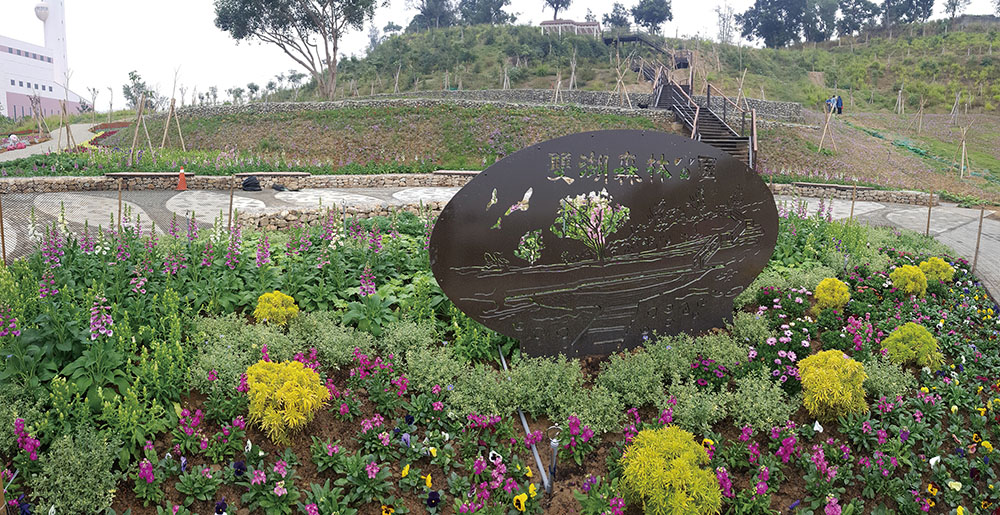Shuanghu Forest Park
◎English translation: Hou Ya-ting
◎Photos courtesy of Public Works Bureau
Shuanghu Forest Park is located where Kaohsiung's Sanmin, Niaosong and Renwu districts converge, and named for the two lakes it is sited between: Jinshih (Golden Lion) Lake and Chengcing Lake. The literal meaning of shuang hu is “twin lakes.”

 When this 26-hectare park is completed by 2020, it will form an ecological corridor linking the two lakes. The area already contributes significantly to local ecological systems and harbors a variety of species. At present, Shuanghu Forest Park blooms with seasonal plants and native trees, among them lantana camara and antigonon leptopus (commonly known as coral vine or Mexican creeper). It is hard to imagine that this place was once a graveyard.
When this 26-hectare park is completed by 2020, it will form an ecological corridor linking the two lakes. The area already contributes significantly to local ecological systems and harbors a variety of species. At present, Shuanghu Forest Park blooms with seasonal plants and native trees, among them lantana camara and antigonon leptopus (commonly known as coral vine or Mexican creeper). It is hard to imagine that this place was once a graveyard.
Originally, this land was Fudingjin Public Cemetery. There have been tombs here since the Cing Dynasty (which ruled Taiwan until 1895), but it was not until the Japanese colonial period that the number of graves started to proliferate. At one point, the cemetery contained 12,603 graves, among them the final resting places of early migrants from the Chinese mainland, Taiwan-born folk, Japanese citizens, and even some Muslims. After 2010, Fudingjin Public Cemetery ceased accepting applications for burial spaces.
Before Kaohsiung City and Kaohsiung County merged in 2010, the cemetery was on the city's outskirts. However, because it now enjoys a central location in the merged metropolis, momentum has gathered for Kaohsiung City Government to transform and develop the site. In 2010, the city government altered the status of the land from a cemetery to a park, in order to establish another ecological stronghold inside the metropolis. Furthermore, the graves sited there are to be relocated to public columbaria between 2015 and 2020.
The various graves inside Fudingjin Public Cemetery reflect the development and history of Kaohsiung. The tombs have been studied with reference to ancient maps and documents to better understand the context and stories behind the migration of various ethnic groups. Because these resting places embody a distinct vernacular culture, the city government has decided to preserve three prominent mausoleums – those of Mr. Huang Cing-yun and Mr. Yoichi Otsubo, and a Japanese-era cinerarium – in recognition of their importance to Kaohsiung's development. The three mausoleums will become an integral part of Shuanghu Forest Park's landscape design.
The forest park sits on a round hill-like patch of land in an area scattered with basins. Jinshih (Golden Lion) Lake, formerly known as Fudingjin Basin, is linked to Chengcing Lake by Caogong Canal.
The varied colors and vistas that change with the seasons leave a deep impression on visitors to Shanghu Forest Park. In addition to green spaces, some 3.6 hectares are covered with coreopsis tinctoria. The tree species one can find here include Taiwan Zelkova, bald cypress, rosy trumpet tree, flame tree and Indian-almond tree. When visiting the forest park, head to its western side for an enchanting panoramic view of northern Kaohsiung.
